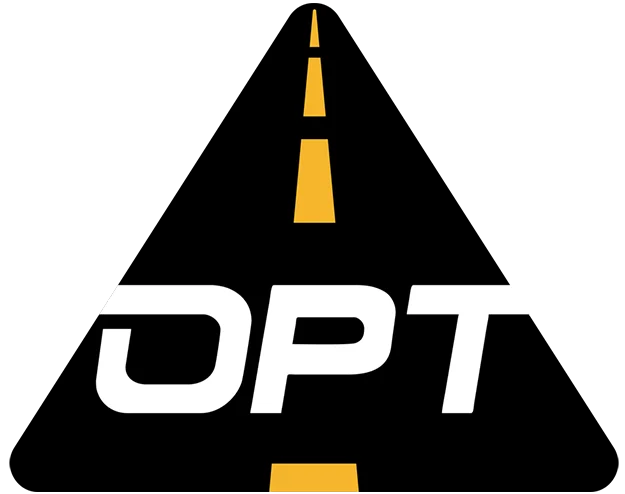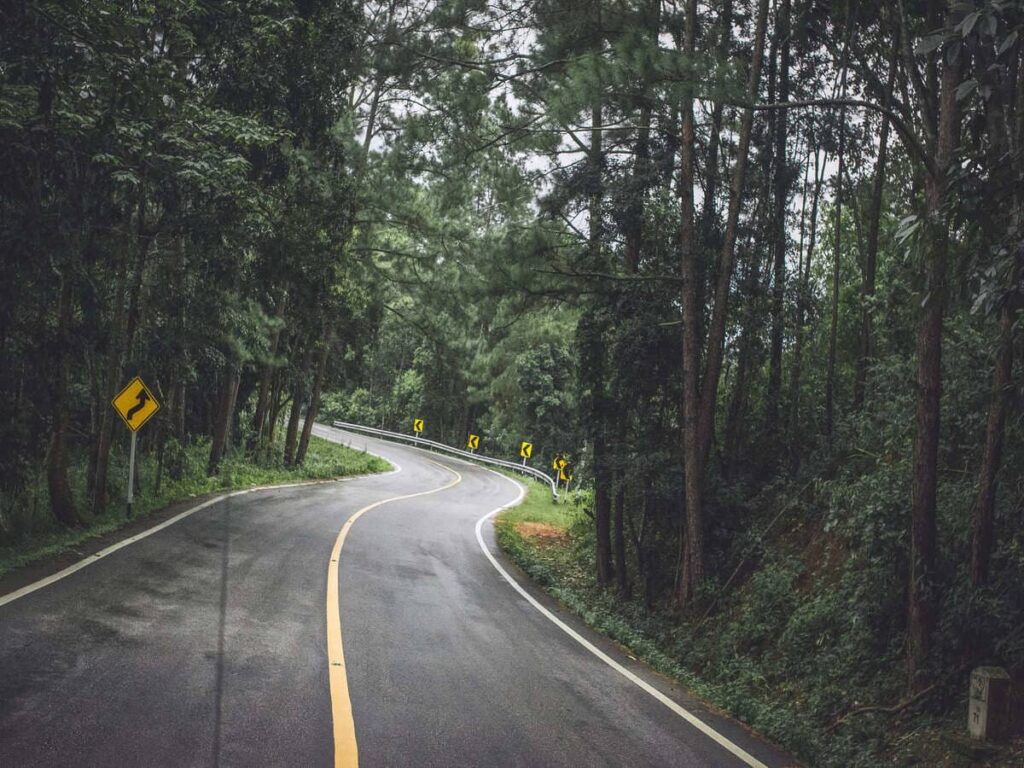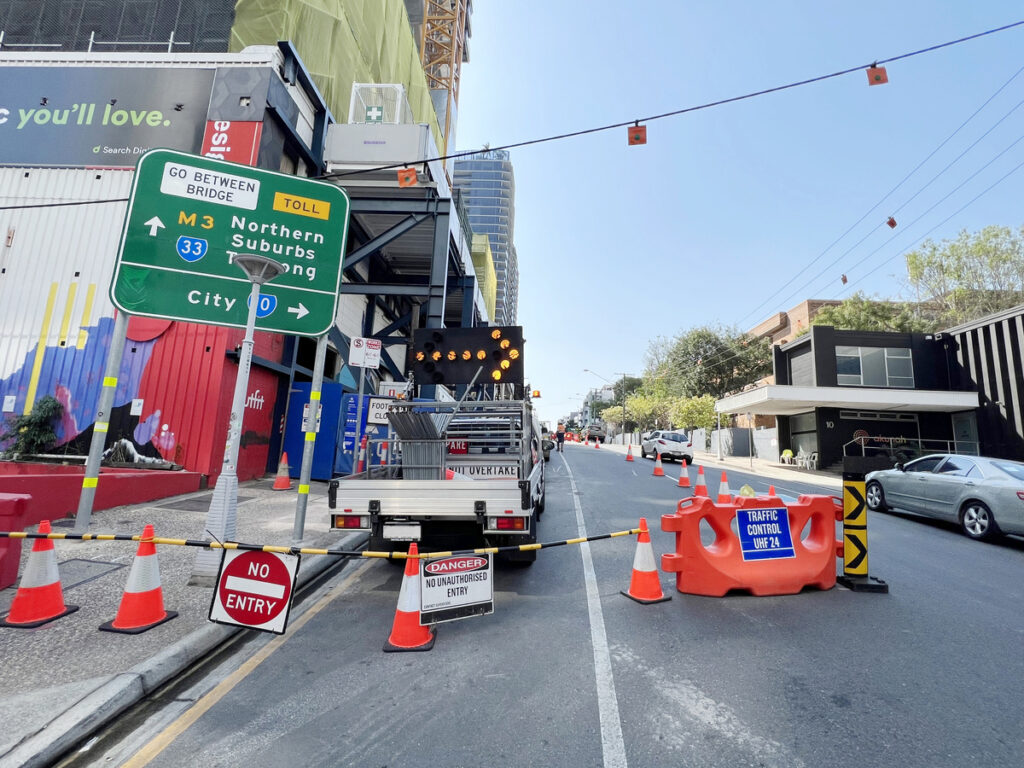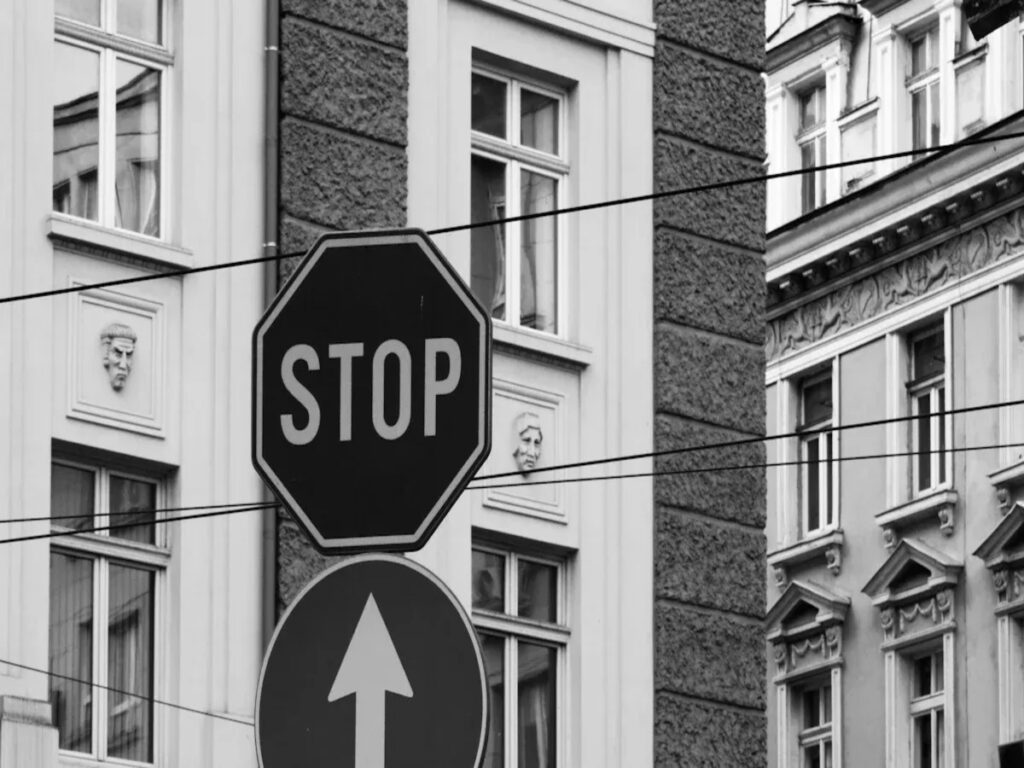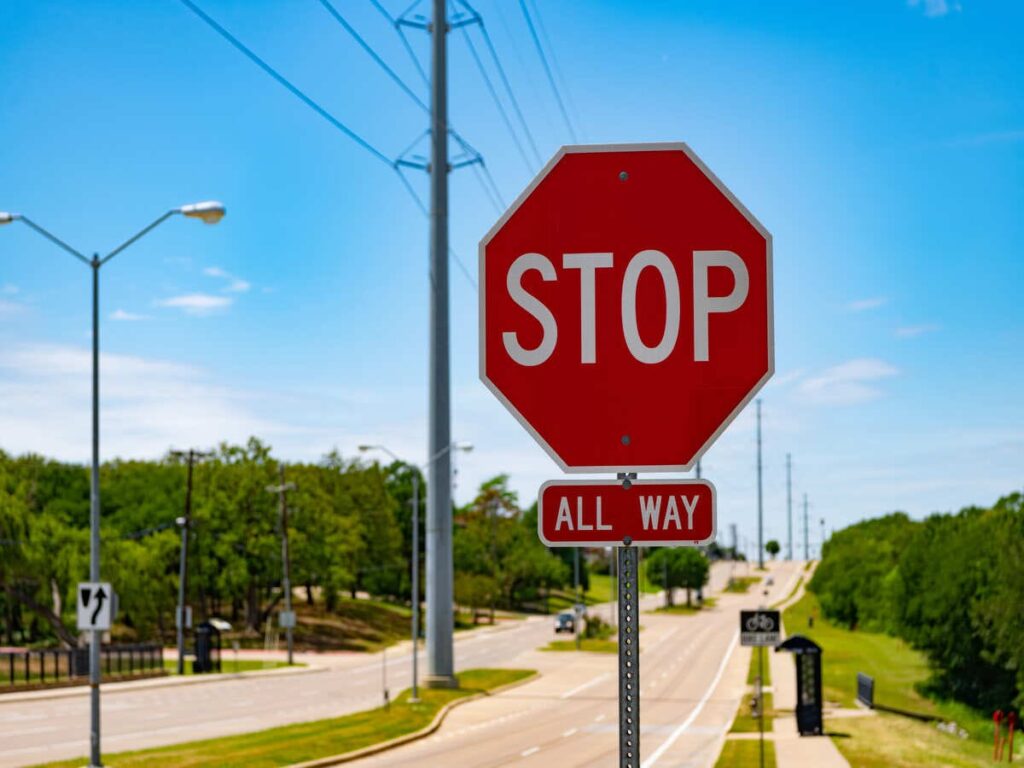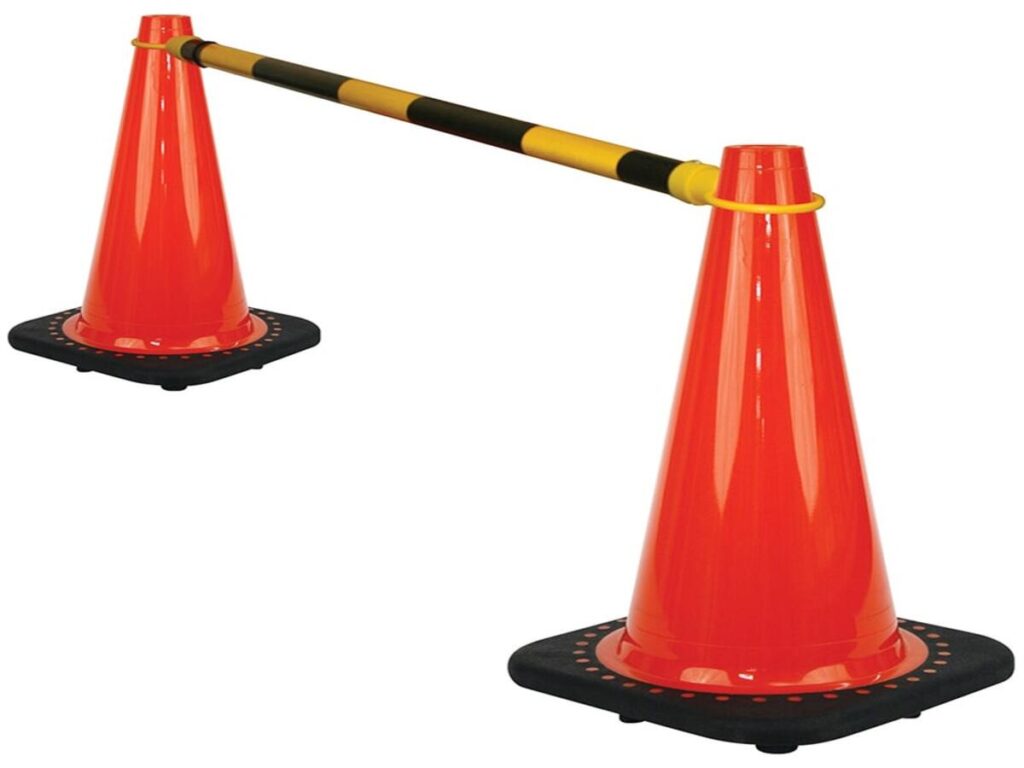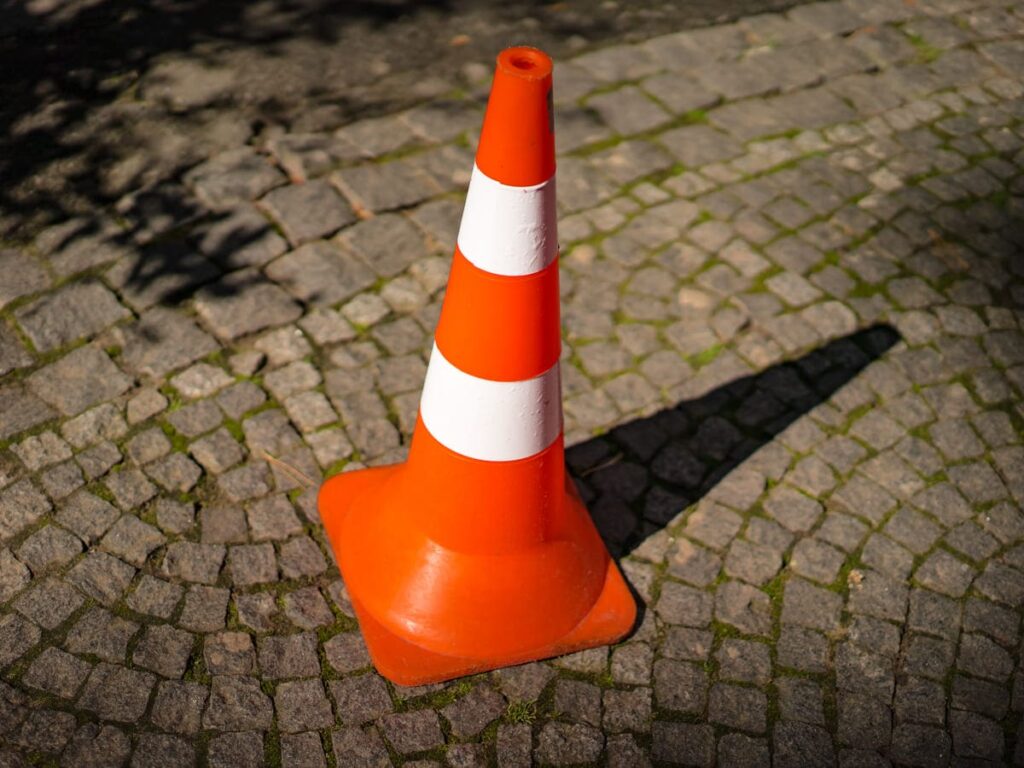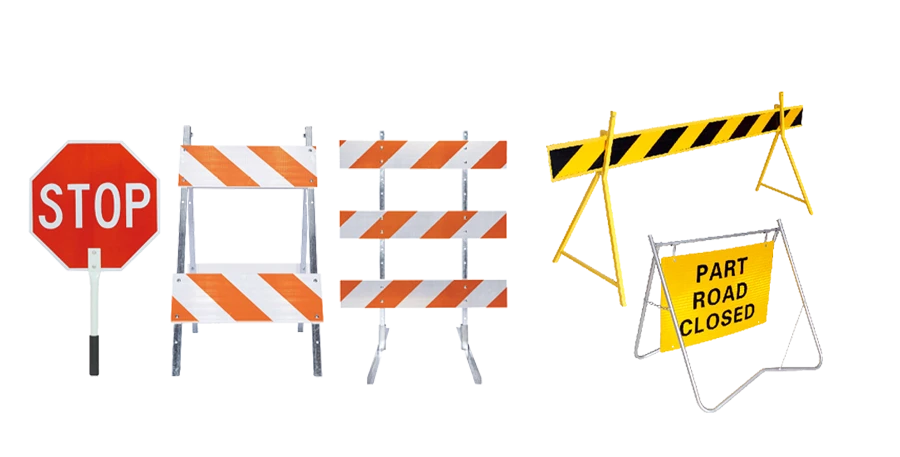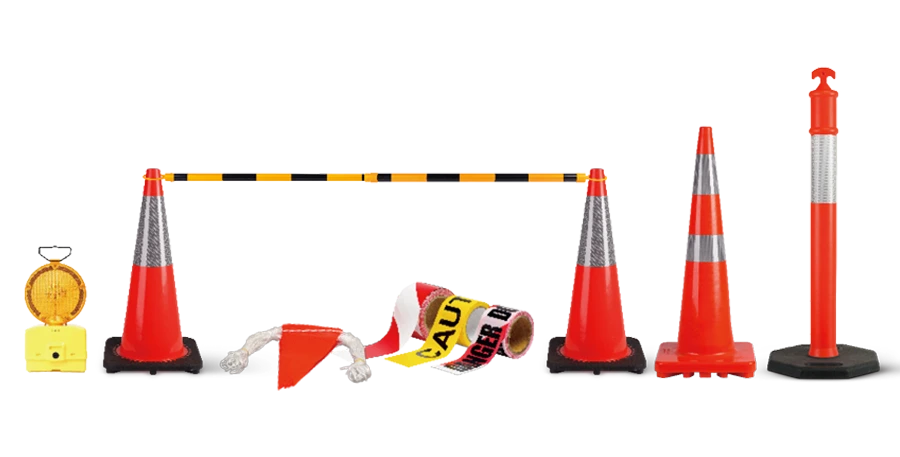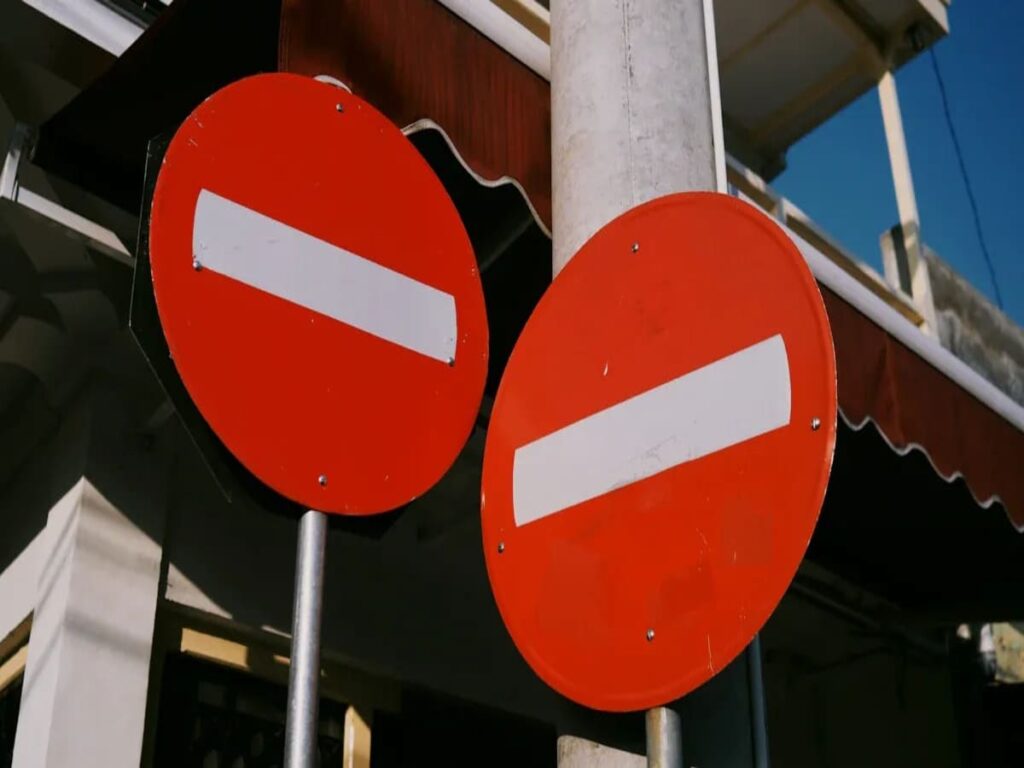
Cities are increasingly facing more traffic congestion and fewer people using public transit. Many public transportation systems struggle with inefficiencies, high maintenance costs, and competition with cars. To tackle these issues, traffic control signs and new infrastructure are essential for improving the situation. Par exemple, in China, big-data traffic signal control has streamlined trips and significantly reduced CO2 emissions. In Warsaw, dedicated tram lanes have made public transport more efficient.
NACTO’s The Structure of Success emphasizes that collaboration between city agencies and transit departments is crucial for creating cities that are easier to navigate, equitable, and environmentally sustainable.
For traffic departments looking to improve urban mobility, OPTRAFIC offers innovative signage solutions. By providing de haute qualité, customizable traffic signs, OPTRAFIC helps cities implement effective traffic control measures. These signs not only optimize traffic flow and reduce congestion but also promote safer, more efficient public transportation systems. Whether you’re managing a large-scale city project or looking to improve specific areas, OPTRAFIC provides the tools needed to create more sustainable, accessible urban environments.
Principaux à retenir
- Transit-oriented development (TOD) helps people live healthier lives. It does this by getting people to drive less. It also gets people to walk and bike more.
- Good traffic signs and infrastructure help public transit work better. They make it easier for people to find and use buses and trains.
- When the community helps plan, transit projects fit what people need. This also helps make things fair for everyone who lives there.
- Using smart technology and better infrastructure can make transit much better. This helps clean the air and keeps people healthier.
- City agencies and private companies must work together for TOD to work well. This teamwork helps make neighborhoods lively and easy to get around.
Transit-Oriented Development (TOD)
Core Principles of TOD
Transit-oriented development helps cities focus on people and how they move. There are important ideas that guide this way of planning. The table below shows these main ideas:
| Principe | Description |
|---|---|
| Walk | Focuses on making it easy for people to walk. |
| Cycle | Wants more people to use bikes for travel. |
| Connect | Helps different types of transport work together. |
| Transit | Makes it easier to use public transit. |
| Mix | Supports having many types of buildings together. |
| Densify | Wants more people living close together in cities. |
| Compact | Likes cities that are built close together. |
| Shift | Tries to get people to use cars less often. |
Promoting Sustainable Urban Growth
Transit-oriented development helps cities grow in a healthy way. It gets people to use cars less and live healthier lives. Studies show these projects can cut carbon footprints by 30%. This means cleaner air and better health for everyone. When there are different types of buildings, communities get stronger. People walk more and talk to their neighbors. Local stores get more customers because more people walk by. Cities that are built close together save time on travel and use space better.
- TOD helps mix different types of buildings, making communities stronger.
- It cuts down on car use, ce qui aide l'environnement.
- Making it easy to walk helps people stay active and meet others, so communities are healthier.
The Role of Public Transit in TOD
Public transit is very important for transit-oriented development. Planners work to connect where people live and how they travel. When it is easy to get to transit stations, more people want to live there. More people living near stations means more riders and better service. Having homes, magasins, and offices near stations makes the area lively. How well these projects work also depends on what people want and need.
Equity and Community Involvement in TOD
Getting the community involved makes sure transit-oriented development helps everyone. Talking with local leaders early helps match projects to what people want. Planners find out who is important to talk to and work together on a plan. Listening to everyone helps make better choices. Rules about land and buildings are important for fairness. Setting up ways for people to give feedback and join in helps everyone feel included. These rules should make sure all voices are heard and everyone has a fair chance.
Traffic Signs for Effective Transit Control
Bus Lanes and Transit Priority Signs
Cities put up signs to keep bus lanes open. These signs help buses move quickly. Drivers see the signs and know where buses go first. When cities use these signs, more people ride the bus. Buses also arrive on time more often. Transit priority signs let buses go before cars at busy places. This helps stop traffic jams.
Wayfinding and Accessibility: Ensuring Clear Navigation
Wayfinding signs help people find their way in transit systems. Good wayfinding helps everyone, même les personnes handicapées. Cities should use bright colors so signs stand out. They should pick simple fonts and clear pictures. Tactile signs help people who cannot see well. Both screens and spoken messages help those who cannot hear or think clearly. Cities should check signs often and ask riders for ideas. These steps make signs work better for all riders.
- Use bright colors so signs are easy to see.
- Pick simple fonts and clear pictures.
- Add tactile signs for people who cannot see well.
- Give both screens and spoken messages for those who need them.
- Check signs often and ask riders for ideas.
These steps help everyone use transit signs with confidence.
Signage for Safety and Compliance
Signs help keep streets safe for everyone. Dans zones scolaires, cities use signs to make streets safer. This costs less and needs fewer changes. Talking with people in the area helps signs work better. Crosswalk signs help people walk safely, but drivers must follow rules. More police checks help keep streets safe for a long time.
Note: Signs work best when people learn the rules and police enforce them.
Innovative Traffic Signage Solutions for High-Traffic Areas
Modern cities use smart signs to control busy streets. Intelligent Transportation Systems and smart traffic lights help stop traffic jams and keep people safe. Cities like Copenhagen and Singapore use smart lights for bikes and walkers. This makes trips faster and air cleaner. Smart systems help emergency teams get places quickly and work with public transit. Roundabouts are another new idea. They have cut deadly crashes by up to 90% dans certains endroits.
Integration of Traffic Infrastructure
Pedestrian and Bike-Friendly Networks
Cities that connect their infrastructure make streets safer for walking and biking. Most people who use public transport walk to get there. Better sidewalks and crossings can help more people use public transport. This can make almost 70% more people accept it. Many low-income areas do not have safe places to walk or bike. This makes it hard for them to use transit. Protected bike lanes and slower traffic help more people ride bikes. A study in Europe showed longer bike paths can make bike trips go up to 25%.
| Type de preuve | Description |
|---|---|
| Public Transport Dependency | 91% of users walk to a station or stop, et 98% walk from transit to their destination. |
| Walking Infrastructure Impact | Better local streets can boost public transport acceptance by nearly 70%. |
| Equity Implications | Poor walking and cycling infrastructure limits access for low-income groups. |
Designing streets for people walking helps everyone get to transit safely and easily.
Designing Multimodal Hubs for Seamless Transit Transfers
When cities connect different types of transport, it is easier to switch between them. People can move from buses to trains or bikes without trouble. These hubs save time and make travel less stressful. One payment system and better schedules help people pick the best way to travel.
| Avantage | Description |
|---|---|
| Increased convenience | Easy transfers reduce travel time. |
| Économies de coûts | Unified payments lower costs and reliance on cars. |
| Reduced stress | Better schedules mean less waiting. |
| Greater flexibility | Passengers pick the most efficient mode. |
| Unified multi-operator payments | One payment system works for all modes. |
Micromobility Solutions and Signage
Micromobility choices like shared bikes and scooters help connect people to transit. Cities such as Jakarta use clear signs to show where to find bike-share spots and parking. Minneapolis has hubs that help people find and learn about travel options. Good signs make it easier to switch between bikes, scooters, and public transit. This makes trips better for everyone.
Infrastructure Design for Transit-Oriented Communities
Connecting infrastructure helps build neighborhoods that are easy to walk and use transit in. Areas near transit stations are compact, so people can walk and use public transport more. Less parking and more homes close together help make housing cheaper. Transit-friendly design brings together transit, marche, and biking. These ideas help all people, no matter how much money they have, get to jobs and services.
| Élément de conception | Description |
|---|---|
| Walkable Communities | Compact areas near transit promote walking and access. |
| Avantages économiques | Lower commuting costs and more transit use boost local economies. |
| Housing Opportunities | Less parking and more density support affordable homes. |
| Equitable Transit-Oriented Development | Ensures access for all income levels and abilities. |
Conseil: Connecting infrastructure helps cities grow in ways that support moving around, fairness, and caring for the environment.
Strategies for Successful TOD Implementation
Collaboration Between City Agencies and Private Sector
When city agencies collaborate with private sector partners, urban planning becomes more effective, leading to successful transit-oriented development (TOD) projets. This teamwork is essential for creating well-integrated, sustainable communities. A prime example of this collaboration is the Pearl District in Portland, Oregon. In the 1990s, the city and a landowner worked together to build a streetcar system and allow for taller buildings, creating a bustling neighborhood filled with residents and job opportunities.
De la même manière, in Windsor, private developers collaborated with the city to create mixed-use projects near a new train station, fostering better connectivity and urban growth. These partnerships not only help cities expand in a way that aligns with both the area’s current needs and future goals but also improve the overall transit experience.
Signs for traffic control play a critical role in these developments by guiding commuters and pedestrians through these integrated spaces. From streetcar station signs to directional signs for mixed-use zones, proper signage ensures smooth transitions between transportation modes and helps visitors navigate new neighborhoods. By incorporating signage solutions in TOD planning, cities can enhance accessibility, améliorer la sécurité, and create well-connected urban spaces.
Leadership in Transit and Mobility
Good leaders help transit and mobility projects do well. They use plans to build teams, support services, and handle changes. The table below shows important leadership strategies:
| Leadership Strategy | Description |
|---|---|
| Planification stratégique | Agencies use new transit tools and plan for the future. |
| Community Partnerships | Leaders team up with local groups to help mobility services. |
| Innovation and Adaptability | Leaders try new ideas and get ready for quick changes. |
Policy Support for Transit Growth
Rules are important for good tod results. Cities use plans to make rules that help growth and fairness. The table below lists helpful policy steps:
| Policy Measure | Description |
|---|---|
| Affordable housing requirements | New buildings near transit must have some affordable homes. |
| Community land trusts | Non-profits take care of land to stop people from being pushed out. |
| Zoning reforms | Cities change rules to allow more types of homes and people. |
Policies like the Transit Metropolis framework help cities grow in a green and smart way. These rules support clean transportation and make cities meet standards before joining.
- Helps cities grow with clean transportation
- Makes city transport work better
- Gets people to use green ways to travel
Investment in Infrastructure and Technology
Spending money on infrastructure and technology delivers significant returns. Pour chaque $1 spent on transit, cities can receive up to $5 in benefits. Utah’s transit system, par exemple, generates $5.11 for each dollar invested. Au Minnesota, transit-oriented development (TOD) can increase property values by $60,000 per acre. These investments help cities better plan their growth and achieve long-term goals.
A critical aspect of this investment is in signs for traffic control and transit guidance. Well-designed and strategically placed signes ensure that the infrastructure investments work as intended, improving transit efficiency and accessibility. From bus lane signs to wayfinding signs in transit hubs, investing in clear, durable, and smart signage is essential to maximizing the effectiveness of transportation systems. Ces signes help direct traffic, guide passengers, et améliorer la sécurité, making every dollar spent on infrastructure and technology go further.
Overcoming Challenges in TOD Implementation
Addressing Public Resistance and Misconceptions
Cities often face resistance when initiating transit-oriented development (TOD). Residents may worry about the potential impact on their neighborhoods, such as blocked views, increased traffic, or disruptions to their daily lives. En plus, some individuals are skeptical about the effectiveness of public transportation. Pour répondre à ces préoccupations, city leaders take proactive steps to ease tensions and ensure successful TOD projects. This often involves making adjustments to policies, revising zoning laws, and investing in public transportation infrastructure.
Below is a table that outlines common concerns and the corresponding city responses:
| Source of Resistance | City Response |
|---|---|
| NIMBYism (Not In My Backyard) | Proactive policy changes to address community concerns |
| Existing Zoning Laws | Creation of development-ready zoning to facilitate projects |
| Public Policy Challenges | Alignment of public infrastructure investments with transit improvements |
These strategies help cities foster positive community engagement, établir la confiance, and ensure that transit-oriented development aligns with the needs and expectations of residents.
Overcoming Budgetary and Political Hurdles
Transit-oriented development (TOD) requires both financial resources and broad support from various stakeholders. Pour surmonter ces défis, cities implement several strategies that help secure funding and gain approval. One approach is involving the community in the planning process, ensuring that projects align with the needs and desires of residents. Programs like green tape zones expedite the approval process, while housing trust funds and nonprofit land trusts help secure land for affordable housing. Mixed-use developments, which combine homes, boutiques, et les parcs, encourage walking over driving. Financial tools such as Low-Income Housing Tax Credits and grants from the Federal Transit Administration assist in funding affordable housing near transit hubs. Data-driven tools help cities determine the best locations for new developments and plan their funding strategies more effectively.
Below is a table outlining these strategies:
| Stratégie | Description |
|---|---|
| Engagement communautaire | Engaging community members in the planning process to ensure projects meet local needs and build support. |
| Streamlining Development Process | Using programs like green tape zones to expedite the approval process, making it easier to launch projects. |
| Land Acquisition Methods | Leveraging housing trust funds and nonprofit land trusts to facilitate affordable land purchases for development. |
| Mixed-Use Development | Combining residential, commercial, and recreational spaces to promote walking and reduce reliance on cars. |
| Financial Incentives | Utilizing tools like Low-Income Housing Tax Credits and grants from the Federal Transit Administration to fund affordable housing projects. |
| Data Tools | Employing data tools to identify ideal development sites and assess funding needs, improving planning efficiency. |
These strategies help cities secure the necessary funding and political support, making TOD projects more feasible and effective in the long run.
Designing Inclusive and Accessible Public Transit
Public transportation should work for everyone. Universal design makes stations and vehicles easy to use. Step-free boarding and wide doors help people get on and off. Signs with bright colors and audio messages help people find their way. Special seats and comfy benches make waiting better. Digital tools like easy-to-use transit apps and AI helpers make riding easier for all. Safety plans and trained workers keep everyone safe in emergencies. Cities also add ramps, lifts, bumpy paving, and Braille signs to help people with disabilities. Talking to the community helps find problems and fix them. Staff learn how to help riders with disabilities and use special equipment.
Conseil: Universal design and listening to the community help public transportation work for everyone, no matter their ability.
- Step-Free, Barrier-Free Mobility: Level boarding platforms and wide entryways eliminate physical barriers.
- Clair, Multi-Sensory Wayfinding Systems: High-contrast signage and audio announcements assist navigation.
- Inclusive Seating and Rest Areas: Priority seating and ergonomic benches enhance comfort.
- Digital Accessibility and Real-Time Assistance: Accessible transit apps and AI-powered assistance improve user experience.
- Safety and Emergency Preparedness: Inclusive evacuation plans and trained staff ensure safety for all.
Measuring Success: Metrics and Evaluation
Evaluating Transit Accessibility and Ridership
Transit-oriented cities use clear ways to see if people can reach jobs, écoles, and services. How often buses and trains run affects how many people ride and how easy it is to get to work. More people living close together makes it easier to use public transit. Rail systems help people reach more places than buses, but buses get more riders. Cities use a model to count how many places people can get to in a set time. This helps leaders know if changes make life better for people. By watching these results, cities can change their plans to help everyone.
Performance Metrics for Bus and Transit Priority Lanes
Cities need to check if bus lanes and transit priority signs help. They use different ways to measure this. The table below shows some common ways:
| Indicateur de performance | Description |
|---|---|
| Delay Variability | Less change in delay, saving 5–20 seconds per kilometer. |
| Average Delay | Small changes in delay from new schedules. |
| Impact of Traffic Signals | Traffic lights and turns change how on-time buses are. |
| Delay During Peak Hours | Buses have less delay at busy times after new lanes. |
These ways help cities see if bus lanes make trips faster and more reliable. Better bus service can help riders and make life better for everyone.
Long-Term Sustainability and Impact Assessment
To see if projects work over time, cities use special methods. These ways help leaders know if transit-oriented development meets goals and helps people.
- Exploratory Factor Analysis (EFA) finds patterns in how people use shared spaces and plan trips.
- Multiple Regression Analysis (MRA) shows how different things connect to planning and money.
- Covariance-Based Structural Equation Modeling (CB-SEM) checks hard links between project parts.
These tools help cities know if their work makes travel, access, and life better for all people.
Future Trends in Transit-Oriented Development
The Future of Smart Cities and Transit
Cities are increasingly leveraging smart technology to improve transit systems, making travel safer, easier, et plus efficace. As city leaders push for digital and environmentally friendly transportation solutions, many are adding more spaces for walking and biking, fostering walkable communities. Smart mobility solutions, like integrated transportation systems, are also making public transit more accessible. Connecting various modes of travel, such as buses, vélos, and walking routes, enhances the efficiency and popularity of public transport.
Key to these advancements are traffic control signs and solutions de signalisation intelligente, which play a crucial role in guiding travelers through these integrated systems. Par exemple, smart traffic signs can help manage real-time traffic flow, while bus lane signs and Signes de passage pour piétons ensure safety and priority for those using sustainable transportation.
The table below illustrates how these emerging trends are shaping transit plans:
| S'orienter | Description | Impact on Transit-Oriented Strategies |
|---|---|---|
| Integration of smart mobility solutions | Enhances the ease of movement across the city. | Makes cities more navigable, with efficient signage directing traffic and transit options. |
| Data-driven decision making | Allows cities to plan transit systems based on real-time data. | Ensures resource allocation is optimized, with dynamic signs that adapt to traffic patterns. |
| Emphasis on sustainability | Focuses on green transportation options, Réduire la dépendance aux combustibles fossiles. | Supports eco-friendly transportation, with signage that prioritizes sustainable transit modes. |
Cities are also embracing “transport as a service,” offering a variety of travel options that make it easier for people to choose public transportation. By combining innovative signs with smart mobility solutions, cities can create seamless, sustainable, and user-friendly transit systems.
The Role of Electric and Autonomous Vehicles in TOD
Electric and autonomous vehicles are transforming how people move around cities. These vehicles, which can operate as on-demand shuttles, bring passengers from their homes to transit hubs, improving accessibility. City planners are incorporating charging stations and pick-up spots into urban designs, ensuring that these innovative transportation methods are seamlessly integrated. This reduces traffic congestion and makes travel more convenient for everyone.
Autonomous vehicles are particularly valuable in areas with fewer residents, filling in gaps by providing last-mile connections to rail stations and other key transit points. Alongside autonomous vehicles, micro-mobility options like e-scooters offer additional modes of travel, enhancing the overall transportation network.
To support these changes, signs for traffic control play a vital role in guiding users to charging stations, pick-up spots, and other transit services. Smart signage helps direct passengers to available shuttles, e-scooter stations, and public transit connections. Whether it’s autonomous vehicle pick-up signs or charging station indicators, these signs ensure smoother transitions between different transportation modes, making it easier for people, even in underserved areas, to access transit.
The Integration of Digital Tools and Real-Time Data for Transit Management
Digital tools and real-time data help cities run transit. Cities use Real-Time Location Systems to track buses and trains. These systems help make better schedules and fix problems fast. GTFS Realtime data gives updates on where vehicles are and when they arrive. Automated mapping tools and AI guess how many people will ride and when repairs are needed. These tools help cities keep transit working well and make riders happier.
- Real-time alerts help fix problems quickly.
- Predictive maintenance stops breakdowns before they happen.
- Demand forecasting helps match vehicles to busy times.
Smart cities use these digital tools to make transit safer, plus rapide, et plus fiable.
Cities do well when leaders use clear traffic signs. Good infrastructure helps people walk, vélo, and use public transit safely. Planners look at crash data to make streets safer. They focus on keeping people safe when walking. NACTO says cities should build close-together communities. Cities should mix homes, magasins, et des bureaux. They need to manage parking and teach people about new plans.
- Connect transit planning with land use planning.
- Build great places for walking and biking.
- Support carsharing and limit parking near stations.
| Composant | Description |
|---|---|
| Spatial Scope | Cities look at whole transit corridors, not just single spots. This helps solve community problems. |
| Durabilité | Cities use new ways to measure how green their plans are. They check how well plans protect the environment. |
| Operability | Cities use tools to study and teach about transit. These tools help many groups learn and share ideas. |
Cities should plan for people first. They should build homes and stores near transit. Cities should help people live without cars. These changes make travel better for everyone.
FAQ
What is transit-oriented development?
Transit-oriented development builds places where people walk, vélo, or use public transit easily. It puts homes, boutiques, and offices close together. People can get to jobs, écoles, and stores faster.
How do traffic signs support public transit?
Traffic signs show buses and trains where to go. They keep lanes open and help riders find stops. These signs make travel safer and quicker. Cities use clear signs for traffic control so everyone knows how to use transit.
Why are bus lane signs important in transit-oriented development?
Bus lane signs are critical for creating efficient, reliable public transportation systems in transit-oriented cities. These signs help designate lanes exclusively for buses, reducing delays caused by other traffic. By ensuring that buses have dedicated space on the road, bus lane signs improve service speeds and reliability, making public transportation a more attractive option for commuters.
How can transit authorities implement signs for traffic control effectively?
To implement signs for traffic control effectively, transit authorities must first assess the specific needs of the area, including traffic volume, pedestrian activity, and the proximity to transit hubs. Strategic placement of traffic control signs, such as bus lane signs, pedestrian crossing signals, and traffic calming signs, can help optimize traffic flow and support public transit. Authorities should also ensure these signs are visible, well-maintained, and compliant with local traffic regulations.
Where can transit departments purchase the necessary signs for traffic control and bus lanes?
OPTRAFIC offers a comprehensive range of high-quality signs for traffic control, including bus lane signs, Signes de passage pour piétons, et les panneaux de limite de vitesse. Whether you’re working on a large-scale city-wide project or looking to enhance specific transit corridors, OPTRAFIC provides customizable, durable, and compliant signage solutions tailored to your needs.
